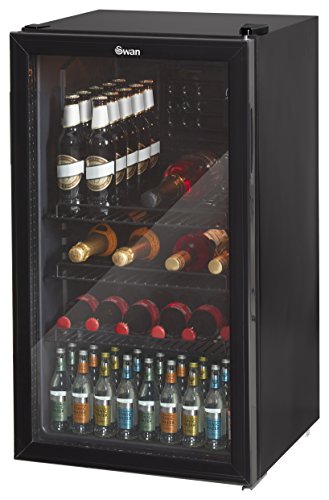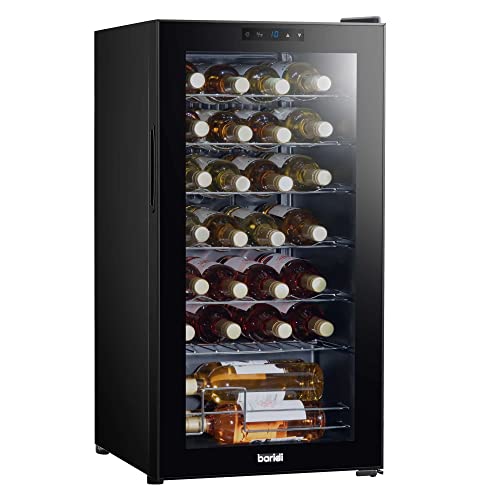A Glimpse Inside The Secrets Of Wine Refrigerator Built In
-

Gretchen
- 0건
- 46회
- 24-09-20 01:57
 Energy Efficient Wine Storage With a Wine Refrigerator Built in
Energy Efficient Wine Storage With a Wine Refrigerator Built in This efficient built-in wine cooler fridge refrigerator allows you to store and serve your wine at the ideal temperature. You can store red and white wine in separate temperature zones to preserve their full flavour.
This efficient built-in wine cooler fridge refrigerator allows you to store and serve your wine at the ideal temperature. You can store red and white wine in separate temperature zones to preserve their full flavour.These units are designed to blend seamlessly into your cabinetry and can be placed under countertops to allow easy access to a refreshing Riesling glass after dinner. They require adequate ventilation and clearance to help dissipate the heat.
Size and Capacity
Built-in wine fridges are stylish and sleek alternatives to freestanding, bulky units. These wine coolers are built with front vents and can be recessed into cabinets or under counters for a seamless appearance. They also offer an easier storage solution that allows you to switch from wine to cold drinks.
These wine refrigerators can hold up to 368 bottles and are ideal for serious collectors with an extensive collection. They are designed to maximize storage capacity as well as precise climate control to ensure that your wine is well-protected in the long term. These units are ideal for basements, garages or other areas that aren't conditioned and where a more rugged storage environment is needed.
The capacity to cool the wine fridge is typically measured in terms of how many standard Bordeaux-style bottles it can hold. However, it is important to be aware of whether your wine collection contains other sizes of bottles like Burgundy or Champagne. This will affect your capacity requirements as these bottles require more space than the standard Bordeaux bottle. Some wine refrigerators have adjustable shelves that allow to store various sizes of bottles.
You'll also need to consider the location you'd like to place it. If you're looking to build it into existing cabinetry it is crucial to remember that you will need adequate space on the right and left side of the unit, as in addition to 6 inches of clearance at the back. This allows the heat produced by the wine refrigerator to escape and avoid overheating.
Consider adding one of these top-of-the-line wine chiller mini fridges in your kitchen if you're looking to splash out on an expensive model with an impressive stainless-looking finish. With their sleek and stylish doors they are the pinnacle of elegance and will make a striking statement piece to your home. These models are available with larger sizes, which are ideal for those who love to host large gatherings and parties. With a variety of features, such as dual-zone cooling and UV protection these wine refrigerators are great for those looking to take their hosting game up one notch.
Ventilation
If a wine refrigerator is not properly ventilated hot air can build up and cause the appliance to overheat. Ventilation is crucial because it helps the cooler keep a constant humidity and temperature as well as preventing fluctuations in temperature that could damage the bottles or alter the flavor of the wine. To ensure that your wine fridge has the right ventilation system be sure to check it after it has been in operation for a short period of time. If the fridge is cool to the touch, then it has proper ventilation.
The majority of wine refrigerators have an internal temperature sensor that monitors the temperature of the cooler and alerts you if it gets out of range. Some models have dual temperature-controlled zones to allow you to store different types of wines at ideal serving temperatures.
The ideal temperature to store wine is between 55 and 66 degrees Fahrenheit. This will avoid the development of cork rot or other issues that could damage your valuable collection. Some models even have a light indicator that illuminates when the temperature inside is lower than your preferred setting.
A built-in wine refrigerator could be the best choice for your collection, depending on the storage requirements you have. They can be installed under counters in the bar or kitchen to allow guests to access. Some models have front ventilation which means they can be mounted flush together with cabinetry to create a a sleek appearance.
To install a wine refrigerator, it is necessary to carefully measure the designated space and consider the cabinet's width. To allow for proper ventilation, the refrigerator should be placed at least a few inch away from all walls. If a wine refrigerator is pushed against a wall or cabinet, it may block the vents and block heat from exiting. Freestanding wine refrigerators have a rear or side venting to disperse heat effectively.
Installation
A wine refrigerator that is built-in can add a stylish, practical addition to your bar. When you are deciding on the best location for your new appliance, you must keep certain things in mind.
Ensure that your new cooler is properly ventilated. If a wine fridge is not properly vented, it will heat up and then reduce its life span.
In addition, you should keep your wine fridge clear of direct sunlight and other heat sources. This will help shield your collection from the harmful ultraviolet rays from the sun, and will also allow it to cool faster.
Last but not least, ensure that your wine refrigerator small fridge is not too near another heat-producing appliance such as a dishwasher. This could lead to the wine being damaged or experiencing unpredictability in temperature fluctuations.
Wine refrigerators come in two types: built-in and freestanding. While freestanding wine refrigerator (jejucordelia.com) wine refrigerators are more flexible in terms of installation options and features, built-in units provide seamless integration into your kitchen cabinetry. Both units come in a variety of bottle capacities and styles so you can find one that will fit your needs.
To ensure that your new wine fridge can properly ventilate, you must take measurements of the space in which you intend to put it. To ensure that it is ventilated, leave a minimum of a few inches around the unit. Also, ensure that the door opens completely. If it can't then the racks inside are difficult to access.
Certain models could also have particular temperature preferences. Some wine refrigerators store red wines at 55°F for optimal serving, while others are designed for long-term storage. Depending on your needs you might think about purchasing a dual-zone wine refrigerator, which allows you to store long-term wines at the appropriate serving temperature and serve chilled beverages in the other zone.
If you're planning on installing an integrated wine refrigerator, be sure to go through the instructions of the manufacturer to ensure that your new cooler is properly installed. Take a few days after putting it into the room before turning it off to let the coolant settle.
Energy Efficiency
In a world where energy is expensive It is crucial to take into consideration the energy consumption of appliances. When purchasing an integrated wine refrigerator be sure to look for models that come with an Energy Star rating or certification. This means that the wine fridge has been equipped with the latest cooling technology and insulation to help conserve energy.
A wine refrigerator has to cool the entire interior, as well as the bottles kept within. A larger wine fridge with a higher capacity bottle will consume more energy than smaller models. Also, the temperature of the room may influence the energy consumption of the fridge as it works harder to maintain an interior temperature that is cooler.
If you're looking to decrease the energy consumption of your wine refrigerator, keep it fully stocked. It may seem counterintuitive but a wine refrigerator that is stocked with sealed and cold bottles won't need to work more to maintain its internal temperature. Keeping your shelves and bottles in a proper order can also make your wine refrigerator run more efficiently. If you arrange your bottles horizontally, they'll cool quicker than if you put them upright.
Another method to reduce your wine fridge's energy usage is to choose a new model that has the latest cooling technology. The most recent models are generally more efficient than previous wine fridges, and could save you as much as PS100 a year in energy costs.
Choose a wine refrigerator that has a low-energy cooling compressor system when shopping. This type of refrigerator is more eco-friendly and uses less energy than wine refrigerators with a high-energy compressor system. Consider a thermoelectric fridge. These wine coolers use a Peltier effect to cool the interior of the fridge. They use much less energy than a compressor-based unit. They are more sensitive to temperature and require more frequent maintenance. Find a company with an excellent reputation for creating high-quality, reliable wine fridges. They will likely produce the best refrigerator that is energy efficient with a cooling system and quiet operation.
등록된 댓글이 없습니다.